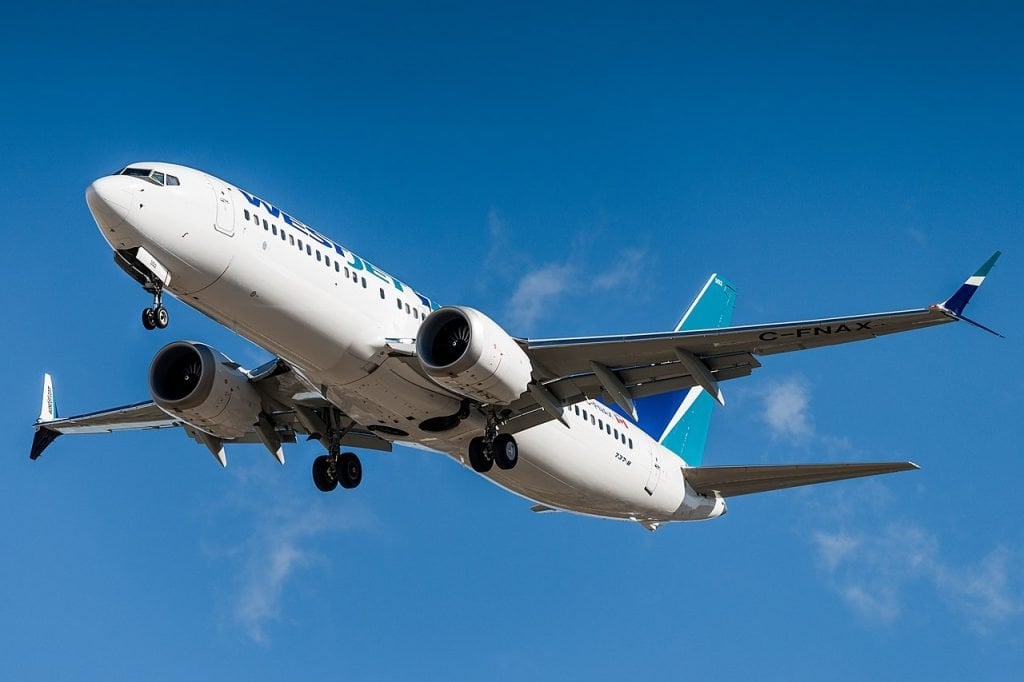President Donald Trump announced today in a press conference that the FAA would be grounding all Boeing 737 MAX 8 and 9 aircraft in the United States. CNBC reports the decision comes following a conversation that took place between President Trump, Daniel Elwell, and Elaine Chao. Elwell is the acting head of the Federal Aviation Administration which controls all aircraft operations within the US. Chao is the US Transportation Secretary. Boeing Aircraft Company (BA) CEO Dennis Muilenburg was also involved in the talks and it is reported that Boeing recommended that the planes be grounded as a measure of caution.
President Trump announced his decision, in spite of the FAA stating earlier that there was no reason to ground the fleet because of the incident. Elwell did tell reporters in a call on Wednesday that the flight track of the Ehtiopian Airlines flight that crashed on Sunday “behaved similarly to the Lion Air flight” that crashed in October of last year.
Boeing announced the release of its newest addition to the 737 family of aircraft in August of 2011, and the aircraft took flight on January 29, 2016. The first aircraft was delivered for service to Malindo Air on May 6, 2017. The plane quickly gained popularity and nearly 5,000 have been sold so far, according to Boeing’s website. The company states that the 737 MAX is the fastest selling Boeing model of all time.
Recent events however have pilots and officials doubting the plane’s safety. The grounding of all 737 MAX flights in the US following two crashes within the last 6 months.
The first crash involved Lion Air flight 610, which crashed thirteen minutes after takeoff on October 29, 2018 from Jakarta, Indonesia killing 189 people, making it the deadliest crash in the history of the 737 family. The second crash took place less than 6 months later on March 10, 2019 when Ethiopian Airlines flight 302 crashed just six minutes after taking off from Addis Ababa, Ethiopia. This crash claimed the lives of 157 people.
In both instances the pilots seemed to lose control of the aircraft during the climb towards cruising altitude. The FMC, or Flight Management Computer, is supposed to hold the plane on a preset course and speed, but it seems that there may be a bug in the system that Boeing has yet to work out. Instead of climbing at a constant angle to cruising altitude, both planes pitched up to an angle that was so steep the engines could not keep the plane moving fast enough to produce lift.
The loss of airspeed caused the planes to “stall,’ or become too slow to continue flying, at which point the nose pitched down. Once enough airspeed was reached by the plane’s subsequent dive, it again pitched violently up. This was repeated several times in an action that pilots call “porpoising.”
Eventually, when the pilots were unable to regain control of the aircraft they crashed. Both crashes claimed the lives of everyone on board.
President Trump announced his decision, in spite of the FAA stating earlier that there was no reason to ground the fleet because of the incident. Elwell did tell reporters in a call on Wednesday that the flight track of the Ethiopian Airlines flight that crashed on Sunday “behaved similarly to the Lion Air flight” that crashed in October of last year.
Boeing CEO, Dennis Muilenburg said in a statement “On behalf of the entire Boeing team, we extend our deepest sympathies to the families and loved ones of those who have lost their lives in these two tragic accidents. We are doing everything we can to understand the cause of the accidents in partnership with the investigators, deploy safety enhancements and help ensure this does not happen again.”
In spite of the crashes and the grounding of their fleet, Boeing Aircraft Company (BA) stock closed up $1.73 with a 0.46% gain.












